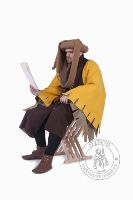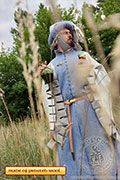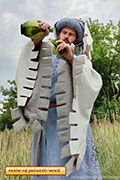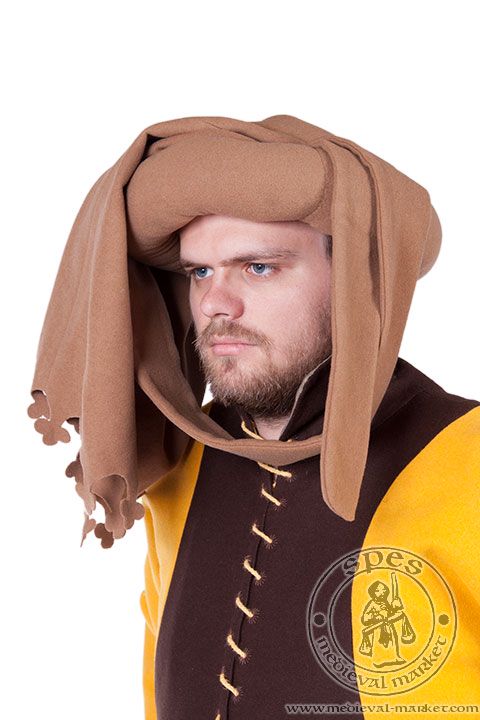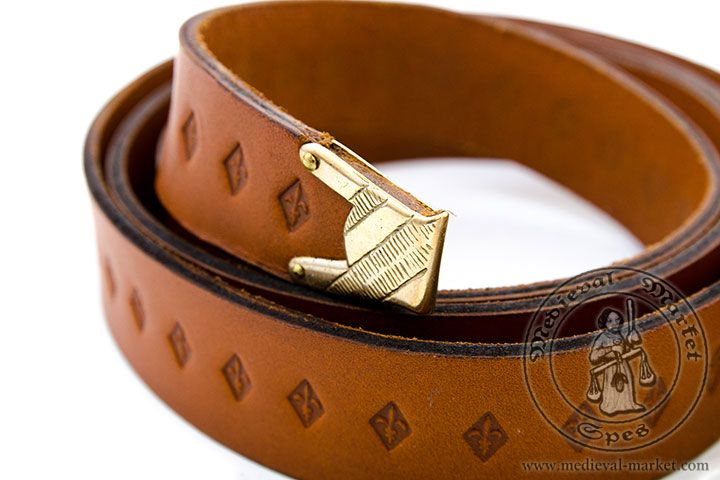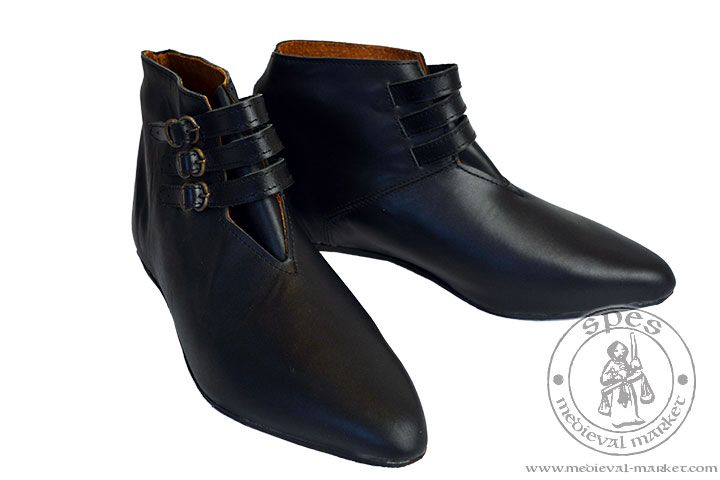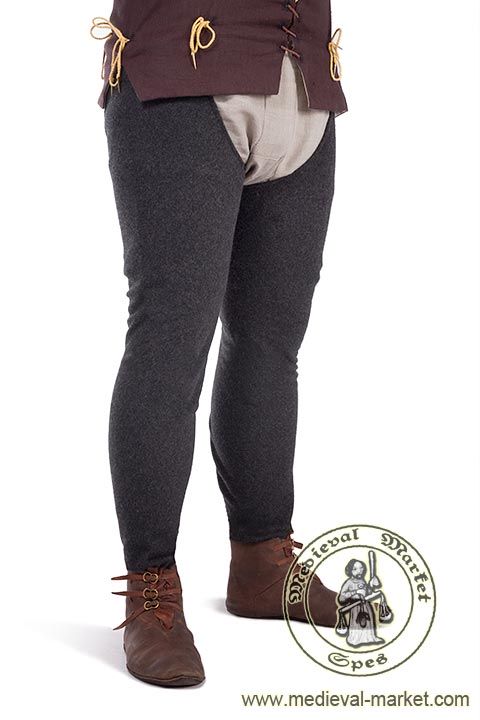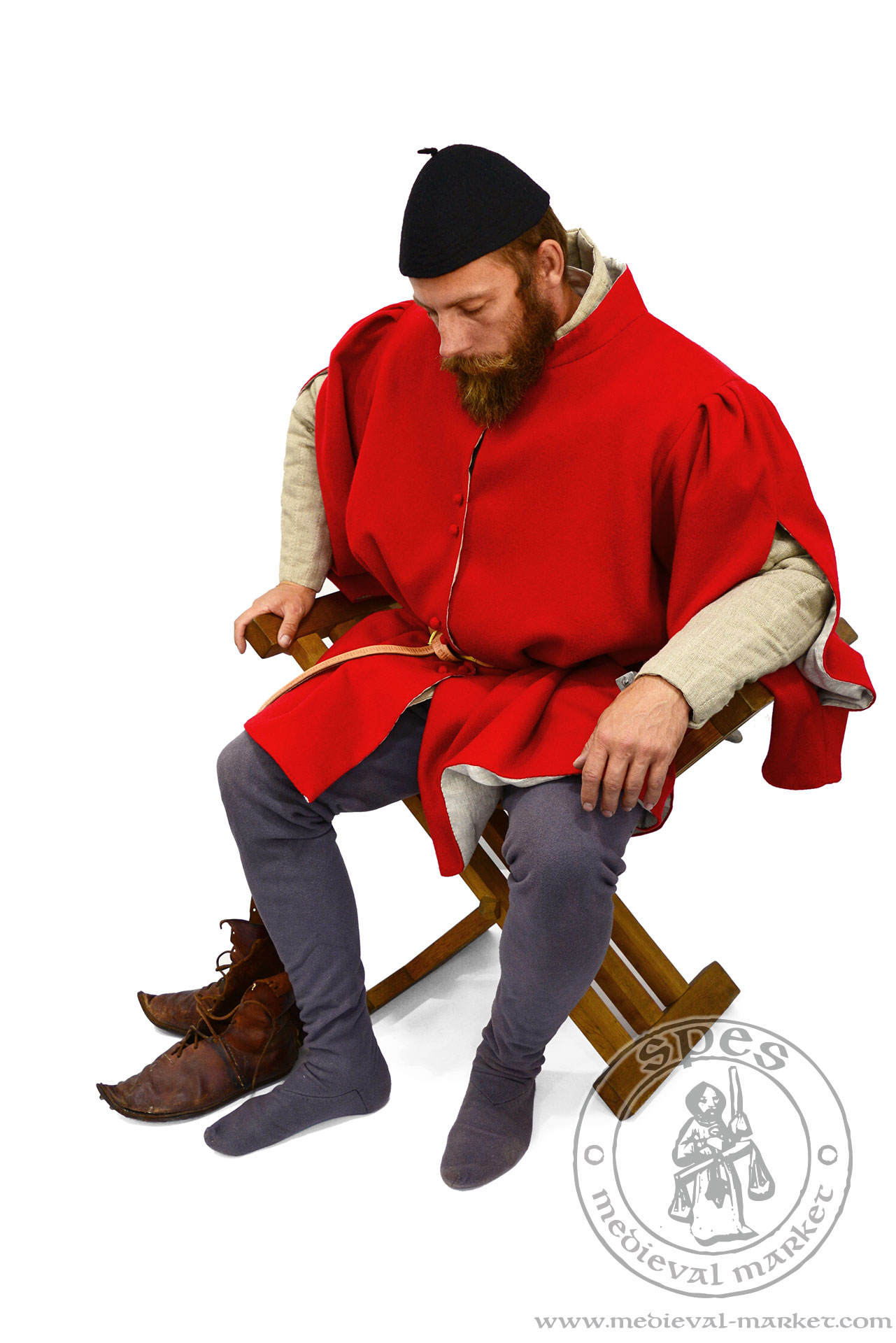If you wish to adjust your cookie preferences for this website, you can do so using your browser settings.
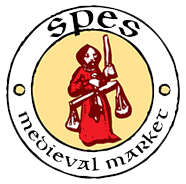


Category: Male clothing > outer garments
Houppelande a grandes assiettes type 1
Houppelande a grandes assiettes type 1
Century: XIV, XV| CODE | Material |
Standard
|
Price | |
| WMWR0079 | Wool | Hand-made | 490.00 EUR |
|
| WMWS0078 | Wool | Mixed | 380.00 EUR |
|
* Please write the extra wishes in the place 'additional information' at the end of the order.
Lowest price in the last 30 days
See how to place an order for several people
Houppelande (also known as pellanda, goun or cioppa) is a former, representative outer clothing, another important example of medieval fashion. Our houppelande a grandes assiettes type 1 is let out from the waist with deep sewn, opened sleeves — a characteristic feature of this garment.
We make our houppelande from wool with linen lining. This male dress is laced on the chest. Sleeves in this clothing usually have different colors from the body. There is an option of choosing the color of wool for sleeves and corpus. There is also an option of choosing the color of linen lining in your houppelande.
A grandes assiettes sleeves are wide and open. The place of their stitching is rearranged and enlarged. Thanks to this special cut, pellanda has loose sleeves, but at the same time it sticks close to the body.
Houppelande as medieval court clothing
Houppelande is another example of medieval men's fashion, this time from the section of outer garments. First layer of former clothing is the underwear (body linen), which is composed of a shirt and braies. Next layer of the historical costume are the undergarments, like hose and doublet. At that time, on such medieval costume, one can put on the outer garment, for example an houppelande.This male cioppa (or: gioppa — medieval outer dress) gained its greatest popularity in the 2nd half of 14th century and 1st half of 15th century. It was often lined with fur, which was another way of highlighting the social status of the owner.
How to wear a houppelande?
Houppelande was worn by both women and men. However, dresses differed with their length — female houppelande always reached the ground and sometimes had a train, while male dresses could be shorter, reaching the knees. What is more, women girdled this clothing under the breast, and men in the waist.An example of a cioppa with opened sleeves of this type can be found in the work of Charles d’Orléans titled Livre contre tout péché.
Houppelande is a court outer garment, usually very spacious and with spacious sleeves, often richly decorated. It is typical for the late 14th and the early 15th centuries.





 Female Clothing
Female Clothing
 Accessories
Accessories Furniture
Furniture Tents
Tents Armament
Armament HMB Line
HMB Line Miscellaneous
Miscellaneous Rent
Rent In stock
In stock Special Offers
Special Offers Search
Search Your Account
Your Account About us
About us Sizing
Sizing How to buy
How to buy Blog
Blog Links
Links Events
Events
